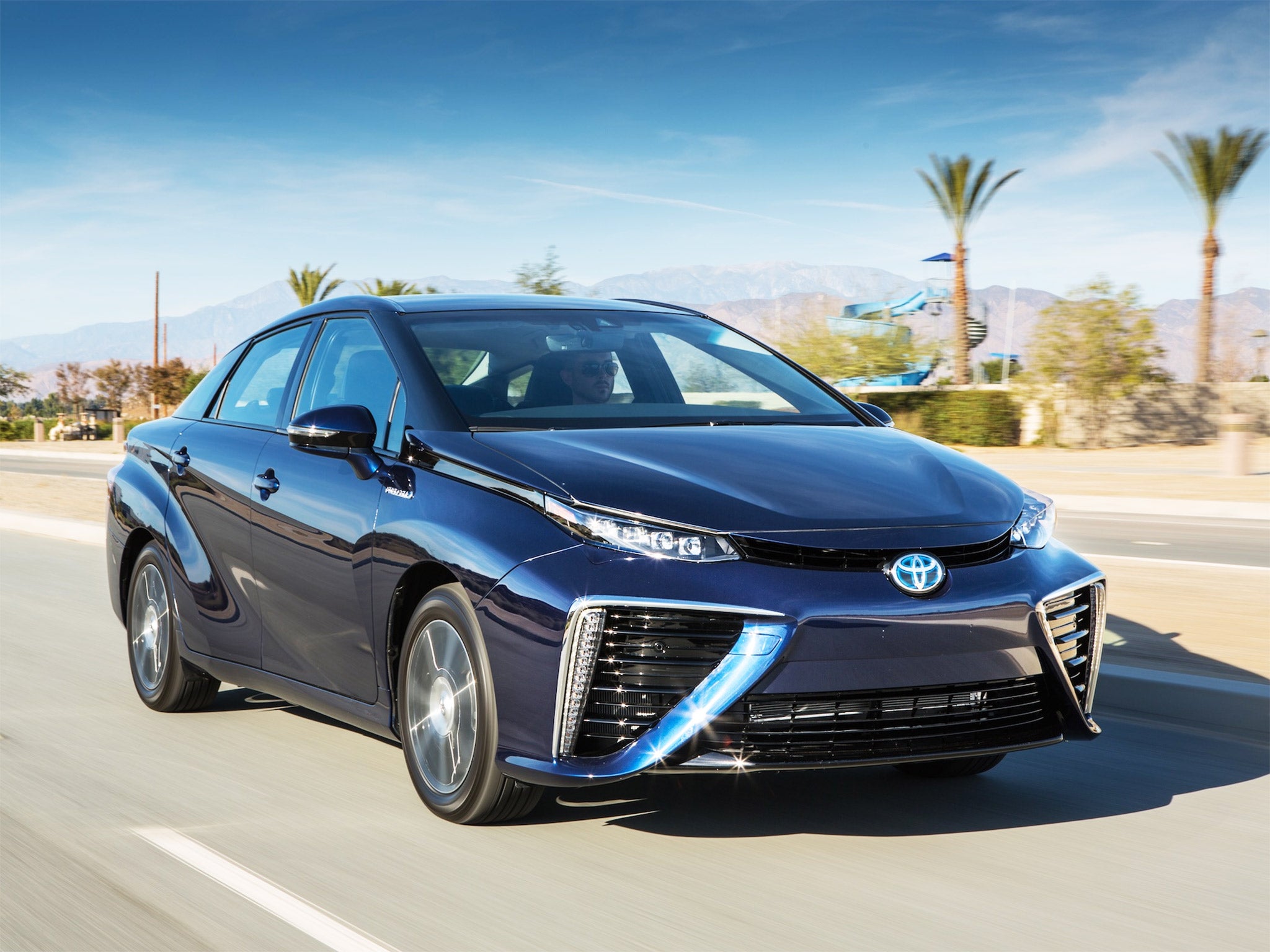Toyota Mirai, motoring review: The future of motoring is here - prepare for water on the roads
The world's first commercially available hydrogen-powered car is no longer an engineering pipedream

Price: £56,000
Engine capacity: AC electric generator
Power output (BHP): 153
Top speed (MPH): 111
Range (miles): 300
CO2 emissions (g/km): 0
The speed limit on the multi-lane expressway that loops around the centre of Tokyo is 60 kilometres per hour. The Toyota Mirai hits that in a few seconds, leaving nothing but a thin stream of water in its wake. No smoke, no emissions, nothing. Mirai means "future" in Japanese, but the world's first commercially available hydrogen-powered car is no longer an engineering pipedream – it arrives in the UK next month, just in time for the opening of the 24-hour public hydrogen refuelling station, which will be found, if you are soon to be a Mirai owner, just off the M1 near Sheffield.
My Tokyo test comes after two decades of research by the firm to get this hydrogen fuel- cell car on to the road. It boasts a range of 300 miles, compared to about 75 miles in most electric cars and, unlike electric vehicles, the Mirai's 5kg hydrogen tanks can be refuelled with compressed hydrogen in just five minutes.
On the Shuto Expressway, the most striking thing about the futuristic-looking Mirai is its vast front air in-takes which seem to slide through the Tokyo traffic. They have a purpose, though, and hint at the car's revolutionary design; water boils at 100 degrees and you can't generate electricity in the Mirai's hydrogen fuel cell with steam, so you have to keep the cell cool.
At its heart the Mirai's fuel cell is driven by a chemical reaction that takes place under the driver's seat as electricity is generated from an electrochemical reaction between hydrogen and air. Hydrogen atoms are compressed and stored in high-pressure tanks at 10,000psi.
They are then sent through a membrane that separates their electrons and protons. Those protons produce an electric current to drive the motor in the same way that a battery drives an electric car. The "freed" protons then combine with oxygen on the other side of the membrane and exit the tailpipe as water.
The Japanese government has plans to create hydrogen from renewal energy by 2030. In the UK though, the Government has committed just £11m to subsidise vehicles and build just 15 refuelling stations by the end of this year, so customers will be need to be very early adopters.
Toyota isn't just betting on hot air with the Mirai, though. It has a track record with revolutionary designs and has just sold its eight-millionth hybrid, the car that took the hybrid mainstream. It might take a while, but one day soon, we might all be leaving nothing but a trail of water in our wake.
Subscribe to Independent Premium to bookmark this article
Want to bookmark your favourite articles and stories to read or reference later? Start your Independent Premium subscription today.

Join our commenting forum
Join thought-provoking conversations, follow other Independent readers and see their replies